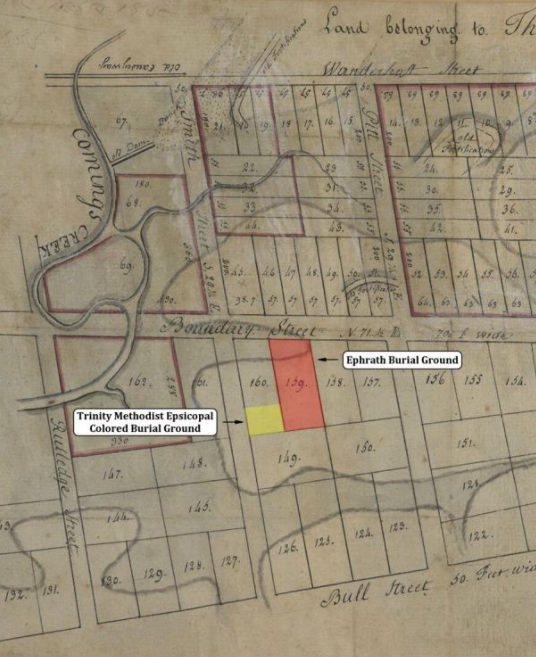 When I was visiting my hometown, Charleston, SC, I saw this story on the front page of the local paper. It’s about two small 19th century cemeteries used by Black churches in Charleston, lots which lie back-to-back within the same block.
When I was visiting my hometown, Charleston, SC, I saw this story on the front page of the local paper. It’s about two small 19th century cemeteries used by Black churches in Charleston, lots which lie back-to-back within the same block.
The overcrowding is horrific.
<<Ephrath’s size is about 240 by 100 feet, and can fit the remains of fewer than 800 people, assuming each plot were 8 by 4 feet and positioned close to one another. But records show the cemetery contains the remains of 1,954 people, suggesting that bodies were stacked on top of one another, Mishoe said.
Trinity’s size is about 100 by 80 feet and should fit the remains of around 250 people. Records show there are 1,653 people buried there.
Together, these two small Black cemeteries contain the remains of more than 3,600 people.>>
One of these cemeteries is located in the backyard of a home that is now for sale. The news story says there are many gravestones in that yard, some now used as paving stones.
This whole story is so sad, and impresses on me the unseen suffering of Blacks in Charleston over the centuries.
Overcrowded cemeteries became real to me when reading Charles Dickens’s “Bleak House,” in which an orphaned boy lives on the edge of such a cemetery in London. The ground is literally full of bones and bodies; every time a shovel goes into the earth, to deposit a new one, it brings up pieces of older burials. The stench is overwhelming, and sickens the orphan boy who lives and sleeps there.
I’m glad for Dickens’s skill at making an environment come vividly alive. That is the environment into which Black families in Charleston went to bury beloved mothers, children, friends, over and over again.
